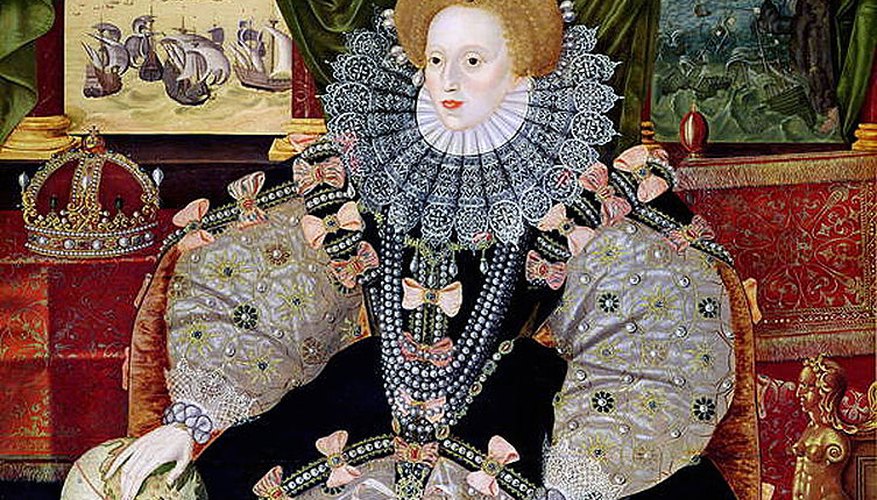The elaborate linen ruffs worn in the 16th and 17th centuries had to be heavily starched to hold the curves in place. Luckily, crisp paper will form graceful curves without so much work. This paper ruff is a great addition to a costume for the Shakespearean era. Wear it over a dark choir or graduation robe with a skull cap for a simple costume or add it to a more elaborate outfit.
Cut one long edge of a 5 m (5 yard) strip of 5 cm (2 inch) wide adding machine paper with scalloped-edge scissors to give the ruff a decorative edge. You may skip this step if you want a plain ruff. Scalloped-edge scissors cut a scallop instead of a straight line. They are available at craft shops.
- The elaborate linen ruffs worn in the 16th and 17th centuries had to be heavily starched to hold the curves in place.
- You may skip this step if you want a plain ruff.
Accordion pleat the straight side of the paper, making a 1.2 cm (1/2 inch) long fold every 5 cm (2 inches). The folds should be perpendicular to the long edge of the paper.
Punch a hole in the middle of the paper between each fold with a hole punch. The holes should be 1.2 cm (1/2 inch) in from the straight side of the paper. You can fold up the paper and cut several layers at once. The number depends upon the strength of your hole punch.
- Accordion pleat the straight side of the paper, making a 1.2 cm (1/2 inch) long fold every 5 cm (2 inches).
- The holes should be 1.2 cm (1/2 inch) in from the straight side of the paper.
Thread a 1 m (1 yard) length of 3 mm (1/8 inch) wide ribbon through the holes.
Tie the ruff around your neck and spread the folds evenly.
TIP
You can cut the edge with scissors to mimic the look of lace. Instead of cutting the edge, glue on lace cut from paper doilies.
